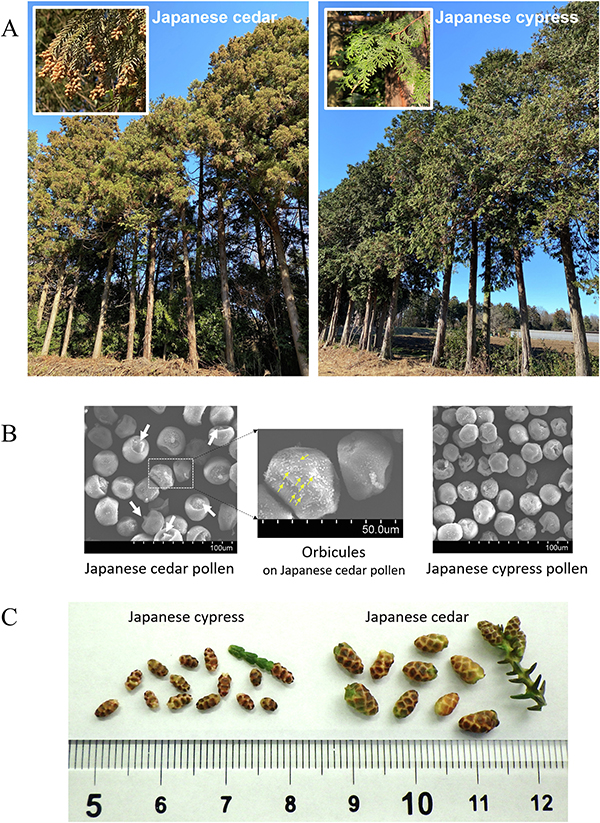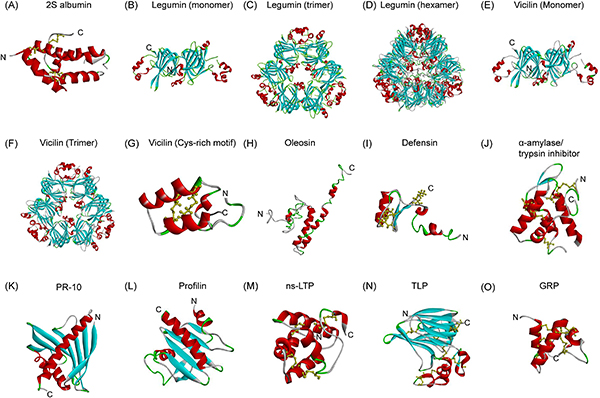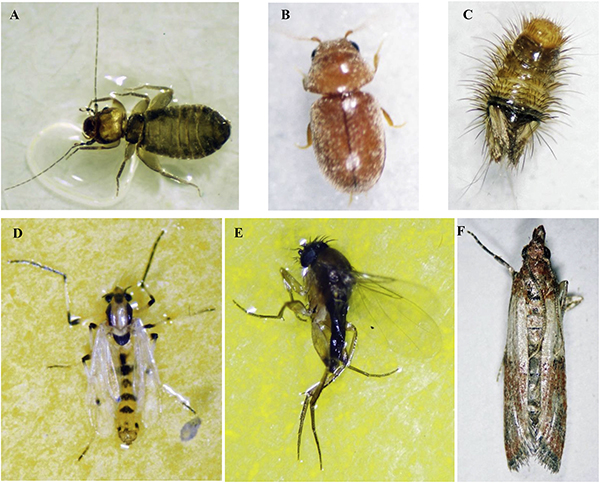Volume 70, Issue 3 (July 2021)
Review Series: Allergens in Modern Society: 2021
Osada and Okano provide the latest review of pollen allergens from trees of the Cupressaceae family, which are found in East Asia, the Mediterranean region, and the United States, with an emphasis on Japanese cedar and cypress pollinosis. In Japan, the prevalence of seasonal allergic rhinitis caused by Japanese cedar pollen has dramatically increased in the past half-century, to the point where it is now considered a “national affliction.” Japanese cedar (Cryptomeria japonica) pollinosis patients often also respond to Japanese cypress (Chamaecyparis obtuse) pollen because of the IgE cross-reactivity, causing them to suffer throughout the combined pollen seasons for both trees. An allergen-specific immunotherapy (AIT) for Japanese cedar pollen had been believed to be effective also for treating pollinosis caused by Japanese cypress, owing to the B-cell and T-cell level cross-reactivity of their major allergens. A recent important advance in the field is the identification of a novel major Japanese cypress pollen allergen, Cha o 3, with cellulase activity. Japanese cypress pollen contains a large amount of Cha o 3; however, Japanese cedar pollen contains a considerably lower amount of the homologous Cry j cellulase, suggesting that AIT with allergen extract of Japanese cedar pollen might not be so effective for modulation of Cha o 3-specific responses in patients sensitized to Japanese cypress pollen.
Maruyama reviews the molecular allergology of plant-derived food allergens for classification, molecular structures, molecular diagnostics (component-resolved diagnosis, CRD), IgE epitopes, and future recombinant allergen-based AITs. A majority of the plant food allergens belong to the four protein families/superfamilies: prolamin, cupin, Bet v 1/PR-10, and profilin. The remainder include oleosins, defensins, thaumatin-like proteins (TLPs), and gibberellin-regulated proteins (GRPs). The prolamin superfamily includes the major wheat allergens. Plant-derived food allergens often share common structural features, such as numerous disulfide bonds, oligomeric structures, and repeated sequences, resulting in heat-stability and resistance to digestive enzymes of their allergenicity. Bet v 1/PR-10 and the profilin families include major allergens associated with pollen-food allergy syndrome (PFAS) and are sensitive to digestive enzymes. CRD is useful for clinical diagnosis of allergic diseases caused by plant sources. While linear IgE epitopes were identified in plant food allergens, this review includes an overview of conformational IgE epitopes of seed storage proteins and PFAS-related proteins. Engineered allergens might be applicable to future AITs.
Fukutomi and Kawakami present a unique review, focusing on respiratory sensitization to insect allergens in not only occupational but also non-occupational settings. Occupationally, anglers and workers exposed to live fish bait (larvae of moth, mealworm, fly, and non-biting midge), laboratory and aquaculture workers (cricket, locust, flour moth, and fruit fly), sericulture workers (silk moth), and so on (fly, various grain pests, and cochineal) can be exposed to insect allergens and may develop insect allergies. Non-occupational respiratory exposure to airborne insect particles also occurs in daily life. Insects are present outdoors, and their airborne particles (moths, caddis flys, and midges) can lead to seasonal allergies. Insects found in houses (cockroaches and grain pests, and Asian lady beetle in the United States) can induce allergies. In an entomological survey in Tokyo, Japan, the arthropod numbers in house dust were highest for house dust mites, followed by booklice and the orders of Coleoptera (cigarette beetle and varied carpet beetle) and Diptera (flies and non-biting midges). Indian meal moth, a grain pest, can live outdoors and can also invade houses. Globally, the sensitization rate to insect allergens shows large regional variations. Cockroach sensitization is not always the highest among insects, and moth sensitization is the most common in Japan, Brazil, and Ohio in the United States. This review also describes the clinical significance of these insect allergens (epidemiology, indoor and outdoor exposure, symptoms, and allergen components), useful for diagnosis and for avoiding and eliminating insect allergens.





